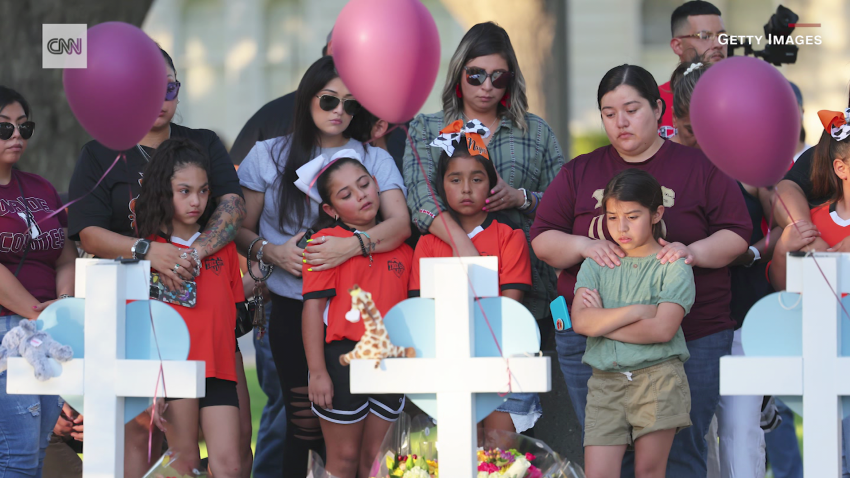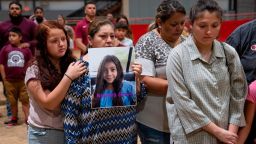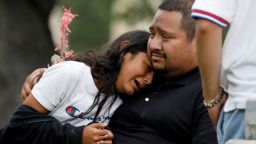Editor’s Note: Rinad S. Beidas is a professor of medical ethics, health policy and psychiatry at the University of Pennsylvania Perelman School of Medicine. She is the director of the Penn Medicine Nudge Unit and founding director of the Penn Implementation Science Center at the Leonard Davis Institute. The views expressed in this commentary belong solely to her and do not necessarily represent those of the University of Pennsylvania Health System or the Perelman School of Medicine. View more opinion at CNN.
I was a 17-year-old high school senior when the unthinkable happened: Two students at Columbine High School shot and killed 13 people before dying by suicide. News of the mass shooting rocked the country, and I still remember the adults who tried to reassure me by noting the infrequency of such an event – it was an anomaly, they said.

Fast-forward to 2022. School shootings are happening more often. Firearm injuries are the leading cause of death for young people in the United States. Now that I’m a 40-year-old child psychologist doing firearm safety research and a mother to two elementary school students, I have trouble reassuring my kids when they ask me, “Mom, are we safe? Will someone come shoot us at school?”
And while the country reels from the horrific loss of life after the tragedy in Uvalde, Texas, it’s also important to ask what the mental health implications are for the students who witness and survive school shootings – and for the millions of young people in the United States who live in fear of their school being the next target. While young people in America are still more likely to be exposed to other forms of gun violence, the threat of school shootings looms large, and we don’t really know how this affects mental health and well-being.
We must first acknowledge the forces we’re living with at this moment. There’s been a pandemic for more than two years. More than 200,000 children in the United States have lost a parent or caregiver to Covid-19, a burden disproportionally experienced by young people from racial and ethnic minority groups. Children are already experiencing a mental health crisis of epic proportions. The surgeon general issued an advisory to highlight the urgent need to address the nation’s youth mental health crisis, and leading organizations, including the American Academy of Pediatrics, American Academy of Child and Adolescent Psychiatry and the Children’s Hospital Association have declared a national emergency in child and adolescent mental health.
This is the context in which our children are living. So, what do we know about the outcomes of school shootings on the young people who live through them? Unfortunately, there hasn’t been enough research, but what we do know suggests these shootings leave behind a profound impact, as we would expect.
The severity of survivors’ post-traumatic stress disorder symptoms is related to their proximity to the mass shooting. Anxiety and sadness are elevated, and local exposure to school shootings is associated with increased antidepressant use among youths. School shootings also increase absenteeism and grade repetition, reduce test scores, reduce the likelihood of completing high school and college, and reduce employment and earnings at ages 24 to 26. The cost is not just personal – it’s societal.
As for the young people who haven’t experienced a mass shooting, a majority of them worry that one could happen at their school. We also know little about the impact of school safety tactics such as active shooter drills on the well-being of young people, but early findings suggest they may be associated with increased anxiety, stress and symptoms of depression.
So, how do we move forward?
First, we should establish some common ground. Safety is important to every single person, firearm owner or not. Parents want their children to be safe at school. Teachers want to go to work without having to contend with an active shooter. Gun safety – which includes responsible and secure firearm storage – is not the same as gun control, and it’s something we can all agree upon.
Second, and consistent with a gun safety approach, we ought to treat firearm violence as a public health issue, just as we have for motor vehicle injury prevention. There are evidence-based solutions at the individual, organizational, community and societal levels that we know we can take to make change.
These solutions include establishing norms and systems around responsible and secure firearm storage, turning vacant lots into green community spaces, which studies have shown correlates to a reduction in violence and crime, and considering restrictions on purchases of large-capacity magazines for semiautomatic or assault weapons.
Third, we must prioritize and destigmatize mental health. We must invest in making mental health accessible for all Americans. That means we should make mental health foundational to health care and embed it in our educational curriculum. We should also ensure equitable access to evidence-based mental health services in schools, communities, faith-based organizations and anywhere children and families might need it. This is necessary at all times but particularly in the period following a school shooting.
Fourth, we must fund firearm safety research. For more than two decades, there was little federal funding for firearm injury prevention research due to a provision in a 1996 congressional appropriations bill known as the Dickey Amendment. That didn’t change until 2019, when Congress allocated $25 million to the Centers for Disease Control and Prevention and the National Institutes of Health, and there’s still a lot of catching up to do to better understand how to increase firearm safety and reduce injury and deaths.
Fifth, we need influential people to speak up. In 2017, the rapper Logic wrote a song called “1-800-273-8255,” which is the National Suicide Prevention Lifeline phone number. This song was associated with increased calls to the lifeline and a reduction in suicide deaths . Similarly, we need public figures and influencers to speak up about firearm safety. On Thursday, the New York Yankees and Tampa Bay Rays forwent tweeting during their game and instead shared facts about gun violence in the aftermath of the school shooting in Uvalde.
I hope that if we, together as one nation, take some of the steps outlined above, perhaps we will one day live in a country where school shootings are once again unthinkable. We must not lose hope, and we must not forget. If we each take action and come together as a community with common ground, there is a way forward.


